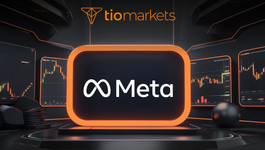Reflation: Definition & Trading Strategies | TIOmarkets
BY TIOmarkets
|June 13, 2024Reflation is a term that often surfaces in economic discussions, particularly in the context of monetary and fiscal policies aimed at stimulating a sluggish economy. Understanding reflation is crucial for traders and investors as it can significantly impact market dynamics and trading strategies. In this article, we delve into the definition of reflation, its indicators, and how traders can adapt their strategies to capitalize on reflationary trends.
What is Reflation?
Reflation refers to the deliberate measures taken by governments and central banks to expand a country's output, aiming to recover from a period of economic slowdown or deflation. This process is typically characterized by increased government spending, tax cuts, and lower interest rates, which collectively seek to boost consumer spending and investment.
Key Characteristics of Reflation
Reflationary policies are designed to increase the money supply and reduce the cost of borrowing. This, in turn, encourages spending and investment, leading to higher demand for goods and services. As demand increases, it can lead to higher prices and, eventually, to an increase in inflation to a healthy level. It's important to distinguish reflation from inflation, as the former is a process aimed at reaching desirable inflation levels, not exceeding them.
Another characteristic of reflation is its focus on stimulating economic growth by improving the conditions for investment. This can lead to job creation, increased consumer confidence, and improved corporate earnings, all of which are positive indicators for the stock market.
Indicators of Reflation
Identifying reflationary trends early can give traders a significant advantage. Several economic indicators can signal the onset of reflation, including GDP growth rates, employment figures, consumer spending data, and inflation rates.
GDP Growth
An increase in GDP growth can be a clear sign of reflation. It indicates that the economy is expanding, with more goods and services being produced and consumed. Traders should monitor GDP reports as they can provide insights into the overall health of the economy.
Employment Figures
Improvements in employment figures, such as a decrease in unemployment rates, suggest that reflationary policies are having their intended effect. More people working means more income to spend, which can further stimulate economic growth.
Inflation Rates
A moderate increase in inflation rates can also indicate reflation. Central banks often have an inflation target that they consider healthy for the economy, usually around 2%. Achieving or moving towards this target can be a sign that reflationary measures are working.
Trading Strategies During Reflation
Understanding the implications of reflation can help traders adjust their strategies to take advantage of changing market conditions. Here are some strategies to consider during reflationary periods.
Investing in Stocks
Reflation often leads to higher consumer spending and improved corporate earnings, making stocks an attractive investment. Companies in sectors such as consumer goods, real estate, and construction tend to benefit the most from reflationary policies.
Commodity Trading
Commodities like oil, gold, and copper can also perform well during reflation. Increased economic activity drives up demand for energy and raw materials, potentially leading to higher commodity prices.
Forex Trading
The forex market can be influenced by reflationary trends as well. For example, a country experiencing reflation might see its currency strengthen due to higher interest rates and economic growth. Traders can look for opportunities to trade pairs involving the currencies of countries undergoing reflation.
Risks and Considerations
While reflation can create opportunities for traders, it's important to be aware of the risks. Over-leveraging in anticipation of market movements can lead to significant losses, especially if the expected reflationary trends do not materialize as predicted.
Market Volatility
Reflationary periods can be accompanied by increased market volatility. Traders should be prepared for sudden price movements and ensure their portfolios are diversified to manage risk effectively.
Interest Rate Changes
Central banks may adjust interest rates in response to reflation, impacting various asset classes. Traders should stay informed about central bank policies and adjust their strategies accordingly.
Now, let's delve deeper into the specific strategies that traders can employ within each asset class during reflationary periods:
Stock Trading Strategies
When considering stock trading during reflation, it's essential to focus on sectors that are poised to benefit the most from increased economic activity. Sectors such as technology, healthcare, and industrials often perform well during reflationary periods. Additionally, companies with strong balance sheets and a history of growth may outperform their peers.
Traders can also look for opportunities in value stocks that may have been undervalued during periods of economic slowdown but stand to gain from reflationary policies. These stocks can offer significant upside potential as the economy recovers.
Commodity Trading Strategies
Commodity trading during reflation requires a keen understanding of supply and demand dynamics. Traders can focus on commodities that are essential for economic growth, such as industrial metals and energy resources. Monitoring global supply chains and geopolitical events can provide insights into potential price movements in key commodities.
Furthermore, traders can consider diversifying their commodity portfolios to mitigate risk. Investing in a mix of commodities with low correlation can help spread risk and capture opportunities across different sectors.
Forex Trading Strategies
Reflation can impact currency markets in various ways, presenting opportunities for forex traders. During reflationary periods, currencies of countries with strong economic growth prospects may appreciate against those of slower-growing economies. Traders can capitalize on these trends by identifying currency pairs that reflect these dynamics.
It's crucial for forex traders to stay informed about global economic developments and central bank policies. Changes in interest rates and monetary policies can significantly influence currency valuations, making it essential to adapt trading strategies accordingly.
Long-Term Investment Considerations
For traders looking to capitalize on reflation over the long term, it's important to consider the broader economic implications of reflationary policies. Investing in infrastructure-related assets, such as construction companies and materials suppliers, can offer sustained growth potential as governments increase spending on public projects.
Additionally, long-term investors may benefit from allocating a portion of their portfolios to inflation-protected securities, such as Treasury Inflation-Protected Securities (TIPS). These securities are designed to provide a hedge against inflation, making them attractive during reflationary periods.
Conclusion
In conclusion, reflation presents both opportunities and risks for traders across different asset classes. By understanding the key characteristics of reflation, monitoring relevant indicators, and implementing tailored trading strategies, traders can navigate reflationary periods successfully. It's essential to remain vigilant, adapt to changing market conditions, and manage risk effectively to capitalize on the potential benefits of reflation.
Start Trading with TIOmarkets
Ready to put your reflation trading strategies into action? Join the 170,000+ traders in over 170 countries who have chosen TIOmarkets as their trusted forex broker. With our platform, you can trade over 300 instruments across 5 markets, including Forex, indices, stocks, commodities, and futures, all with low fees. Plus, enhance your trading skills with our comprehensive educational resources and step-by-step guides. Don't miss out on the opportunities reflation can offer. Create a Trading Account today and start your journey to successful trading with TIOmarkets.

Risk disclaimer: CFDs are complex instruments and come with a high risk of losing money rapidly due to leverage. You should consider whether you understand how CFDs work and whether you can afford to take the high risk of losing your money. Never deposit more than you are prepared to lose. Professional client’s losses can exceed their deposit. Please see our risk warning policy and seek independent professional advice if you do not fully understand. This information is not directed or intended for distribution to or use by residents of certain countries/jurisdictions including, but not limited to, USA & OFAC. The Company holds the right to alter the aforementioned list of countries at its own discretion.
Join us on social media

Behind every blog post lies the combined experience of the people working at TIOmarkets. We are a team of dedicated industry professionals and financial markets enthusiasts committed to providing you with trading education and financial markets commentary. Our goal is to help empower you with the knowledge you need to trade in the markets effectively.
Related Posts





